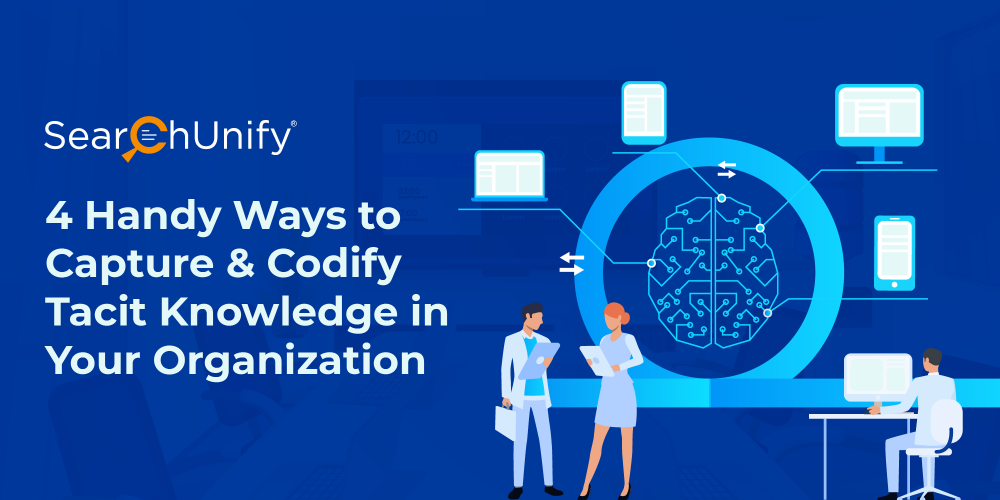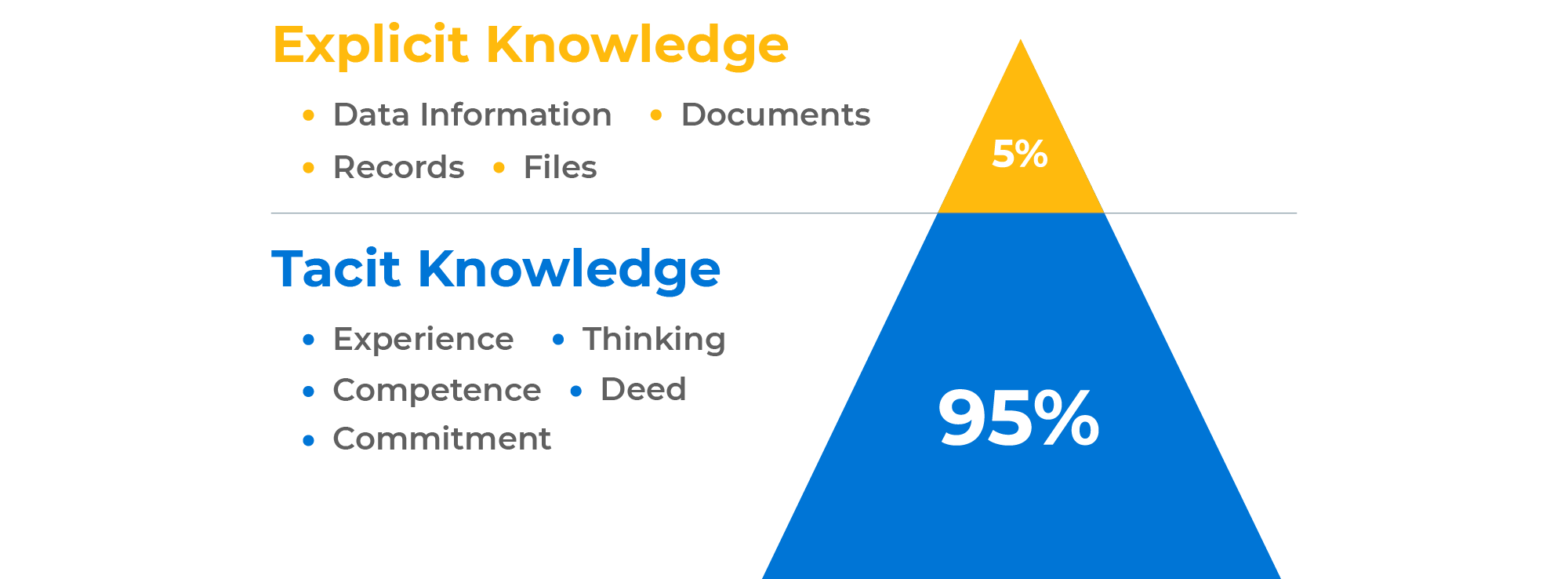
“We know more than we can tell.”— Michael Polanyi
Do you believe that knowledge is something that can always be recorded in words, visualized, and taught? Sorry to disappoint you, but this isn’t the case always.
Can you teach someone innovation, sales, or leadership? Well, NO. These are elusive skills that come with experience and practice. This is where tacit knowledge comes into play. As the name suggests, such knowledge is hard to articulate and share. This is why capturing it remains a prime concern for knowledge managers.
Are you also struggling to demystify and capture tacit knowledge? Then, this blog post is for you. It will walk you through the meaning, significance, and the best practices for capturing tacit knowledge so that your KM efforts don’t go in vain. Let’s get rolling!
What is Tacit Knowledge?
Tacit knowledge is intuitive in nature and rooted in context, experience, practice, and values. Since it usually resides in the mind of the practitioner, it is hard to communicate; until the practitioner is specifically questioned about it.
In support organizations, your service reps often possess a ton of tacit knowledge. However, it is futile, if even your longest-lived employees cannot tap into it to perform their jobs in the best possible way. By capturing tacit knowledge and converting it into KB articles, you can make the information visible and accessible to everyone in the organization. Indeed a much-needed practice in the remote-working environment where employees have minimal interactions with each other.

Why Capturing Tacit Knowledge Is Crucial for KCS Success
Employee churn is inevitable, even at the best workplaces on earth. People come and go, but the loss is immeasurable if you fail to tap into their expertise before they leave. You cannot afford to lose the best ideas and practices as the success of your knowledge management efforts depends on it.
Knowledge-centered service (KCS) can help you with that. However, its effectiveness relies on how well you capture and reuse your organizational knowledge. This makes capturing tacit knowledge paramount.
Additionally, by capturing tacit knowledge and including it in the problem solving process, you come a step closer to KCS success. After all, the ultimate goal of KCS implementation is developing a knowledge repository based on the collective experience of your employees.
Best Practices to Capture Tacit Knowledge
Now that you know the meaning and importance of capturing tacit knowledge, let’s hash out how to do it because that’s what organizations struggle with the most.
1. Promote Knowledge Sharing Culture
We understand that sometimes support agents don’t like to share their best ideas or practices — it’s nice to have the whip hand over the other reps and consider yourself an expert. But, remember the adage, ‘knowledge shared is knowledge squared?’
KCS advocates collaboration and sharing for the success of its Double-Loop Process. So, it is of utmost importance to encourage teamwork and establish knowledge sharing culture within the organization. This encourages agents to help out their team members whenever a new knowledge gap or error is discovered.
Remember: Not just agents but everyone, including managers and executives, needs to be onboard with the idea of promoting knowledge sharing. Without it, the synergy needed across teams to make it work simply won’t exist.
2. Incentivise Knowledge Creation & Sharing
Bob Nelson said, “People may take a job for more money, but they often leave it for more recognition.” Rewards and recognition don’t just build a sense of security in employees but they also motivate them to continue great work. Therefore, it is crucial to provide incentives (both monetary and non-monetary) to employees that share knowledge.
Err on the side of caution — choose quality over quantity! Never provide incentives and rewards based on the number of contributions, or else there’ll be an information overload with most contributions being non-valuable.
Here’s a pro tip: Train your knowledge managers and knowledge experts to review and score submitted information, assuring each submission adds value to the enterprise knowledge. This way, you don’t just save yourself from information overload but also cut down the likelihood of errors and false truths.
3. Automate Knowledge Creation with Intelligent Applications
While solving a case, support agents usually don’t have time to capture the finer details that can be further used by other agents for reference. With smart applications like Knowbler, knowledge creation becomes a part of workflows. How is what you ask?
SearchUnify’s Knowbler populates new articles as a by-product of agents’ resolutions for undocumented issues. It finds keywords from the peculiar resolution and then updates it on a predesigned template to convert it into a knowledge base article in a jiffy.
3. Create Formal & Informal Groups
Formal and informal groups on an internal platform aid employees to discuss work problems and processes. So, ensure a safe space where employees are not on the horns of a dilemma while initiating discussions.
Managers should encourage employees to interact in these groups for upskilling and embracing the collective learning process. Such channels also facilitate the sharing of tacit knowledge among members.
Want to Learn More About KCS?
KCS is not just a buzzword — ask those who’ve successfully implemented it and brought down support costs while driving CSAT. One cannot emphasize enough the importance of capturing, sharing, improving, and reusing the knowledge. If you are a beginner who is all geared up to kick-start their KCS journey, then this is the eBook for you. Download it to demystify KCS and learn its fundamentals.
If you have already embarked on your KM journey but are grappling to make it sustainable, then tune in to this webinar. Hear KCS Academy’s Arnfinn Austefjord and learn how you can improve knowledge linkage through existing organizational workflows and remediate content gaps effectively.

















